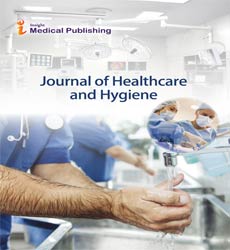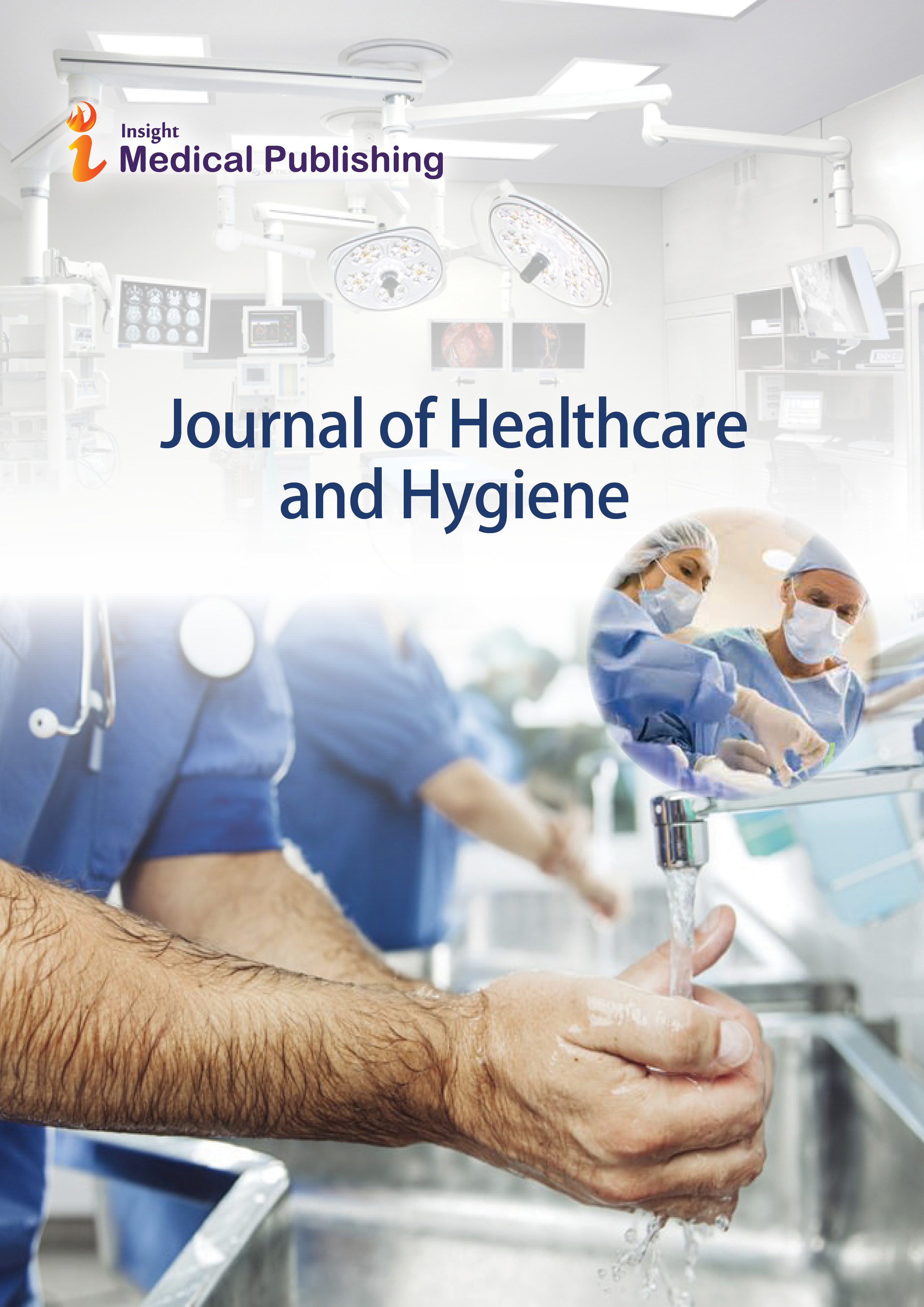Effect of an Educational Meeting on the Understanding of the Results of Laboratory Tests.
Cesare Tosetti*, Ilaria Nanni
Department of Primary Care, Health Agency of Bologna, Italy
*Corresponding author: Cesare Tosetti, via Rosselli 21 40046 Alto Reno Terme (BO), Italy; Tel No: +393383902526; E-mail: tosetti@libero.it
Received date: December 08, 2020; Accepted date: August 17, 2021; Published date: August 27, 2021
Citation: Tosetti C (2021) Effect of an Educational Meeting on the Understanding of the Results of Laboratory Tests. J Health Hyg Vol: 5 No: 3.
Abstract
Communication, joint evaluation and patient understanding of laboratory test results represent frequent and relevant processes in primary care, mainly aimed at the management of chronic diseases and therefore involving a mostly elderly population (1). These processes are influenced by the physician's communication characteristics, by the type of results to be communicated, by the organizational model of communication, as well as by numerous factors of the patient such as age, literacy, expectations, emotional state (2-5). Factors belonging to the patient's sphere affect the timing of the request for evaluation (5). Among these factors, an important role can be played by the patient's awareness to understand the results of the tests (1).
Introduction
Communication, joint evaluation and patient understanding of laboratory test results represent frequent and relevant processes in primary care, mainly aimed at the management of chronic diseases and therefore involving a mostly elderly population (1). These processes are influenced by the physician's communication characteristics, by the type of results to be communicated, by the organizational model of communication, as well as by numerous factors of the patient such as age, literacy, expectations, emotional state (2-5). Factors belonging to the patient's sphere affect the timing of the request for evaluation (5). Among these factors, an important role can be played by the patient's awareness to understand the results of the tests (1).
Key words: Laboratory tests; Primary care; Patient; Empowerment; Health Education
Objective
To evaluate the effect of a simple educational meeting on the awareness of elderly subjects to understand the results of some laboratory tests.
Methods
Participants at two educational meetings on the importance of periodic monitoring of chronic diseases, carried out at a procreative center for the elderly, were invited to fill out two identical anonymous questionnaires, at the beginning and at the end of the meeting. The forms were numbered to allow pre-post matching. Personal data (age, sex) were reduced to a minimum, to ensure maximum anonymity and an acceptable number of responses. The items concerned the understanding of the results and the normal values of some common laboratory tests. Results were expressed as mean (standard deviation) and percentage. The analysis was carried out with non-parametric and chi-square tests with Yates correction. A P value < 0.05 was chosen as statistical significance. The study was conducted according to the indications of the Helsinki declaration. Since this was a totally anonymous investigation without the use of clinical data, according to national legislation, it was not necessary to request explicit consent from the participants.
Results
78 subjects (36 males and 42 females; median age = 70.5 years; standard deviation = 8.5 years), filled out the questionnaires (80% of the audience). There were no significant age differences between male (72.2 years; standard deviation = 9.3 years) and female participants (68.9 years; standard deviation = 7.5 years).
Table 1 shows the results of the questionnaire. Immediately before the meeting, a high percentage of participants (80.8%) said they felt they have an overall good understanding of the results of the most common laboratory tests. However, the percentage of positive responses to the ability to evaluate the single tests varies considerably (cholesterol test = 80.0%; urine test = 70.8%; glucose test = 59.0%, blood count = 45.8%.). 69.2% of participants said they always and quickly contact their doctor in the presence of a laboratory result flagged. Regarding the specific evaluation of simulated results, 77.3% said they consider blood glucose = 100 mg / dL always as alarming, compared to 70.6% of the same evaluation for hemoglobin = 14.6 g / dL, 60.0% total cholesterol = 190 mg / dL and 35.0% HDL cholesterol = 60 mg / dL. No significant differences were found in the responses to the pre-meeting test according sex or age.
The answers after the meeting did not show significant differences with respect to the percentage of participants who said they had a good ability to understand the results of the laboratory tests, but thetr was an increased frequency of positive response to understanding single tests. The percentage of those who said they always and quickly contact their doctor in the presence of an “abnormal” laboratory result decreased from 69.2% to 56.0% (no significative statistical difference). Regarding the specific evaluation of simulated results, blood glucose = 100 mg / dL was considered alarming by 34.8% of the participants (pre-meeting = 77.3%; p = 001), hemoglobin = 14.6 g / dL by 25.0% (pre-meeting = 70.6%; p = 0.001), HDL cholesterol = 60 mg / dL by17.4% (pre-meeting = 35.0%; p = 0.037) e) total cholesterol = 190 mg / dL by 45.3% (pre-meeting = 60.0%; p = ns) of the participants.
| Item | Before the meeting | After the meeting | P value | ||
|---|---|---|---|---|---|
| Yes (%) | No (%) | Yes (%) | No (%) | ||
| Do you think you can understand the results of the most common laboratory tests? | 63 (80.8) | 15 (19.2) | 66 (84.6) | 12 (15.4) | ns |
| Do you think you can understand a blood count result? | 33 (45.8) | 39 (54.2) | 63 (84.0) | 12 (16.0) | 0.001 |
| Do you think you can understand a urine test result? | 51 (70.8) | 21 (29.2) | 75(96.1) | 3(3.9) | 0.001 |
| Do you think you can understand a cholesterol test result? | 60 (80.0) | 15 (20.0) | 78(100.0) | 0(0.0) | 0.001 |
| Do you think you can understand a glucose test result? | 39 (59.0) | 27 (31.0) | 66(88.0) | 9(12.0) | 0.001 |
| If there are "abnormal*" tests do you always contact your doctor immediately? | 54 (69.2) | 24 (30.8) | 42 (56.0) | 33(44.0) | - |
| Blood glucose = 100 mg/dL is always an alarming result? | 51 (77.3) | 15 (22.7) | 24 (34.8) | 45(65.2) | 0.001 |
| Blood total cholesterol = 180 mg/dL is always an alarming result? | 45 (60.0) | 30 (40.0) | 33 (45.3) | 39(54.7) | - |
| Blood HDL cholesterol = 60 mg/dL is always an alarming result? | 21 (35.0) | 39 (65.0) | 12 (17.4) | 57(82.6) | 0.037 |
| Blood hemoglobin = 14.6 g/dL is is always an alarming result? | 36 (70.6) | 15 (29.4) | 15 (25.0) | 45(75.0) | 0.001 |
* “Abnormality” = presence of a flag on the results
Table 1: Results of the questionnaire before and after the intervention (educational meeting).
Discussion
The clinical management of the results of laboratory tests constitutes a relevant workload in primary care, that is further aggravated in the case of misinterpretation, or anxiety caused by interpretation difficulties (2, 6). This study was carried out among the participants to health educational meetings in two ricreative centers for the elderly. Although the participants resulted self-selected, we think that the data may reflect by age and type a large portion of subjects who weigh on primary care clinics as ambulant patients. Or telephone contacts.
The results of the study show that these subjects, while declaring a good ability to understand the results of laboratory tests, overestimate the abnormality and often consult their doctor quickly. These results do not differ according to the gender and age of the participants. Previous studies showed that the understanding of laboratory tests is around 50%, slightly higher than the comprehension of radiological reports, and in about 60% of cases the citizen turned to a healthcare professional to obtain an explanation (2, 7)
Given the simple design of the study, it was not possible to take into account the health literacy skills of the participants. Limited health literacy and numeracy skills are demonstrated to be significant barriers to basic use of laboratory test result data (2-8).
The results of the study also showed that a simple community-based educational intervention can improve the understanding of the laboratory tests. Moreover, the percentage of participants who declared that they always contact a doctor quickly in the event of a “abnormal” laboratory result decreased after the meeting, without reaching levels of significance. This can be explained not only by residual uncertainty by the subjects about the correct significance of the results of the laboratory tests but also in the contest of the close relationship established between patient and family doctor in the Italian Health System.
Conclusions
Elderly subjects overestimate abnormality in the results of the most common laboratory tests. Simple community-based educational interventions can improve the understanding of the laboratory tests.
References
- Hibbard
- Keselman A, Slaughter L, Smith CA, Kim H, Divita G, et al. (2007) Towards consumer-friendly PHRs: patients' experience with reviewing their health records. AMIA Annu Symp Proc 11:399-403.
- Bennett HD, Coleman EA, Parry C, Bodenheimer T, Chen EH (2010) Health coaching for patients with chronic illness. Fam Pract Manag 17: 24-29.
- Litchfield IJ, Bentham LM, Lilford RJ, Greenfield SM (2014) Test result communication in primary care: clinical and office staff perspectives. Fam Pract. 31:592-597.
- Wilkie P (2019) Patient views on understanding laboratory results. Clin Chem Lab Med 57: 371-374.
- Moll J, Rexhepi H, Cajander �, Grünloh C, Huvila I, et al. (2018) Patients' experiences of accessing their electronic health records: national patient survey in Sweden. .J Med Internet Res 20: e278.
- Gilburt
- Davis TC, Wolf MS (2004) Health literacy: implications for family medicine. Fam Med 36:595-598.

Open Access Journals
- Aquaculture & Veterinary Science
- Chemistry & Chemical Sciences
- Clinical Sciences
- Engineering
- General Science
- Genetics & Molecular Biology
- Health Care & Nursing
- Immunology & Microbiology
- Materials Science
- Mathematics & Physics
- Medical Sciences
- Neurology & Psychiatry
- Oncology & Cancer Science
- Pharmaceutical Sciences
